Sehenswertes
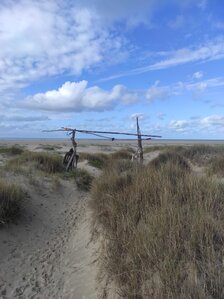
Say, do you know Fanø? Stop, before you protest. I mean the Fanø beneath the skies, the Fanø we as kite fliers often don't really notice.
So please, look beneath the horizon and take a closer look at that breathtaking piece of land.
That is Fanø!
You are looking at the Island the size of 56 m, inhabitant by approx. 3200 "Fanniker".
That is Fanø!
You are looking at the Island the size of 56 m, inhabitant by approx. 3200 "Fanniker".
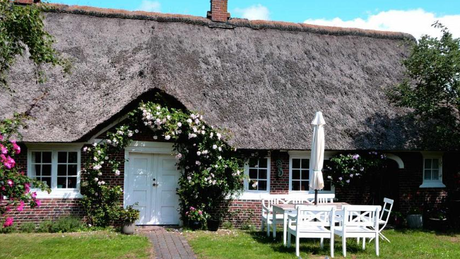
Fanø is dominated by beautiful dunes, which were created throughout many Millenniums.
People have lived here already since the 12century and in the year 1741 they bought th land from the Crown and managed and worked it themselves. They worked the fishery business well and became quite wealthy.
In the 19century Sønderho was the home of the largest shipping fleet in all of Denmark. Proof of this can be seen and admired at the museum or the Costume Museum in Nordby. The Art was also present at all times.
In the 19century Sønderho was the home of the largest shipping fleet in all of Denmark. Proof of this can be seen and admired at the museum or the Costume Museum in Nordby. The Art was also present at all times.

The Aart Museum has rich variety of paintings from around the change of the centuries, when Fanø was still an art colony.
Concerts take place in the churches of Nordby and Sønderho.
The landscape of this Island is unique and within half an hour walking you can hike from the rough dunes to the juicy marshlands or the mud-flats.
We are usually at the large beach, which the North Sea has formed on the West coast of the Island, but it's worth exploring the "other" Fanøe, the Fanø that exists beneath the Kites!
The landscape of this Island is unique and within half an hour walking you can hike from the rough dunes to the juicy marshlands or the mud-flats.
We are usually at the large beach, which the North Sea has formed on the West coast of the Island, but it's worth exploring the "other" Fanøe, the Fanø that exists beneath the Kites!
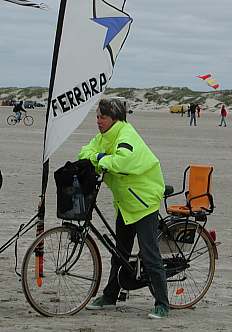
By bike
The Aart Museum has rich variety of paintings from around the change of the centuries, when Fanø was still an art colony.
Concerts take place in the churches of Nordby and Sønderho.
The landscape of this Island is unique and within half an hour walking you can hike from the rough dunes to the juicy marshlands or the mud-flats.
We are usually at the large beach, which the North Sea has formed on the West coast of the Island, but it's worth exploring the "other" Fanøe, the Fanø that exists beneath the Kites!
The landscape of this Island is unique and within half an hour walking you can hike from the rough dunes to the juicy marshlands or the mud-flats.
We are usually at the large beach, which the North Sea has formed on the West coast of the Island, but it's worth exploring the "other" Fanøe, the Fanø that exists beneath the Kites!

Art Museum
For around 100 years - even up to the present day - Fanoe has experienced a large influx of painters who have more or less had or still have their permanent residence here. The environment, the motifs and the lighting conditions cast a spell over the painters. In Sønderho in particular, one could speak of a real "artists' colony". The Fanoe Art Museum was founded in 1992 in "Kromanns Hus". The house used to be a merchant's shop and a factory. The restored merchant's shop from 1868 now stands at the entrance to the museum. Changing exhibitions are shown in the museum. However, the main focus is on paintings depicting Fanoe past and present. (Jochen Rieper)
 Fanø Museum
Fanø MuseumA modest building from the outside, around 300 years old, inside the house contains a very varied collection of furniture, tools and equipment, giving you an impression of how people lived 150 to 200 years ago. You can also see rare artefacts brought home by sailors from various countries. Don't be fooled by the museum's modest exterior, it contains many truly beautiful and rare artefacts. Objects that sailors brought home from different countries can be seen in the Fanø Museum.
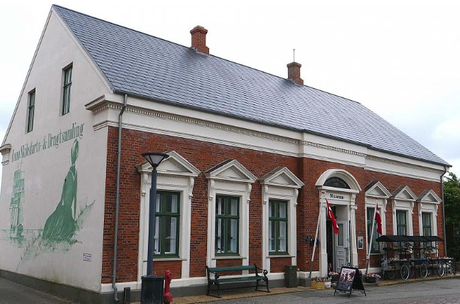
Maritime museum
If you are ever in Nordby for shopping and not on the beach flying a kite, you should definitely take a look at Fanoe's collection of ships and costumes.
At the time around 1900, Fanoe had the second largest fleet of sailing ships in Denmark. It was a difficult time for family life, as the men often travelled with the ships for years. The women had to take care of raising the children, farming and the daily chores. The shipping collection shows the many ship models and types that were represented on Fanoe. Sailor's life is well described. The photos shown here give a good picture of life on board and in the harbours. The life of the women is also described, so that you can also get an idea of how they managed their lives without their husbands. A collection of traditional costumes shows you how the woman was dressed for work or parties.
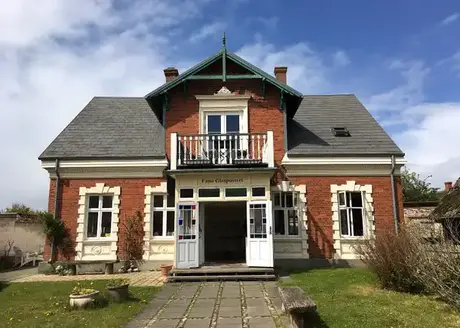
Nordby Glassblowing
If you are ever in Nordby, you should visit the glassblowing workshop in the shopping street. Experience the fascinating process of how beautiful glass objects are made at 1200 degrees, which you can buy once they are finished.
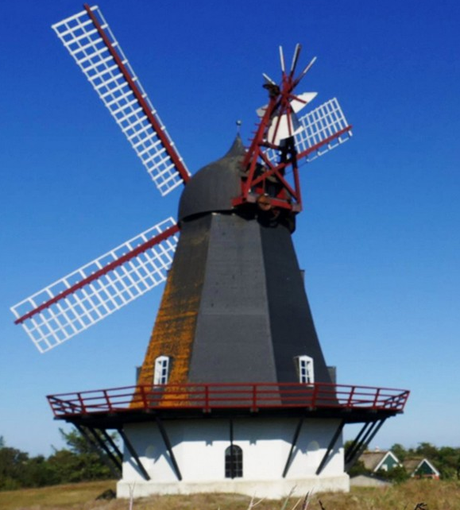
Sønderho Mill
A visit to the mill is always worthwhile!
In the old days, the inhabitants of Sonderho were only allowed to have their grain ground at the royal mill in Ribe on the mainland. In 1701, the parish priest in Sonderho was authorised to build the first mill. Since the licence was granted, several mills have been built, including a trestle mill, which burnt down in 1894. The current mill was built a year later and was in operation until 1923.
Sønderho Day is held at Sonderho Mill every year in mid-July, when many Fanoe residents still wear the old Fanoe costumes. A visit on this day is a must for every visitor to Fanoe to see the beautiful costumes.
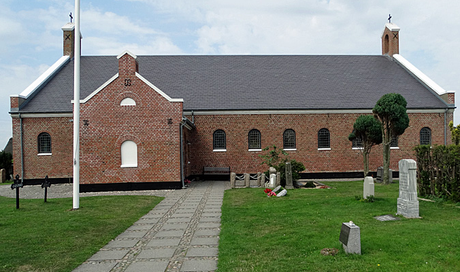
Sønderho Church
Sønderho Church was built in 1782 and was given its present appearance in 1865. Sønderho Church is the church with the most ship models in Denmark. A total of 15 of them adorn the church. After your visit, you should take a look at the cemetery and the memorial. The memorial commemorates the ship disaster in 1825, in which 40 sailors' wives were widowed and 100 children lost their fathers.
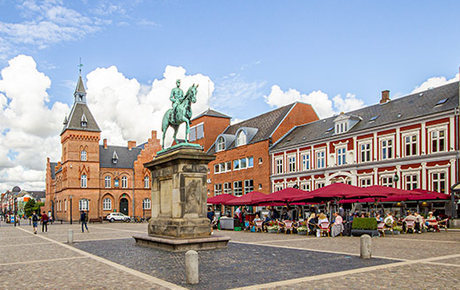 Esbjerg
EsbjergA trip to Esbjerg is always an experience, whether before or after the dragon meeting on Fanø!
Esbjerg is Denmark's fifth largest city and one of its youngest: it was only founded in 1868, after South Jutland fell to Prussia, at the state harbour. Today, Esbjerg has the largest fishing and oil harbour in the kingdom, but has long since transformed itself from a purely industrial town into a place with cultural ambitions.
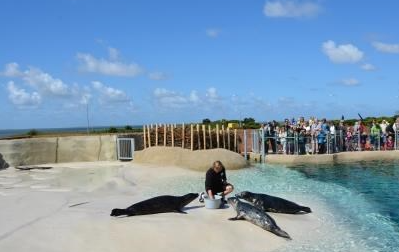
Every kite flyer should visit the Fishing and Maritime Museum with their family as it is particularly popular with children. Not so much because of its documentation on the history of fishing and seafaring in the region. No, the little ones are particularly fascinated by the large saltwater aquariums: In the seal house, you can watch seals swimming underwater. The seals are fed twice a day - to the delight of curious young and old alike. But that's just a side note, because fish lovers will also get their money's worth in Esbjerg, as in the rest of Denmark. And then there is the ‘national dish’ - real Danish hot dogs. The best place to eat them is in the centre of Esbjerg, as there are a number of good places here where you can really unwind. Afterwards, you should make your way back to the sunny island of Fanø and enjoy a round of kite flying on Fanø beach.